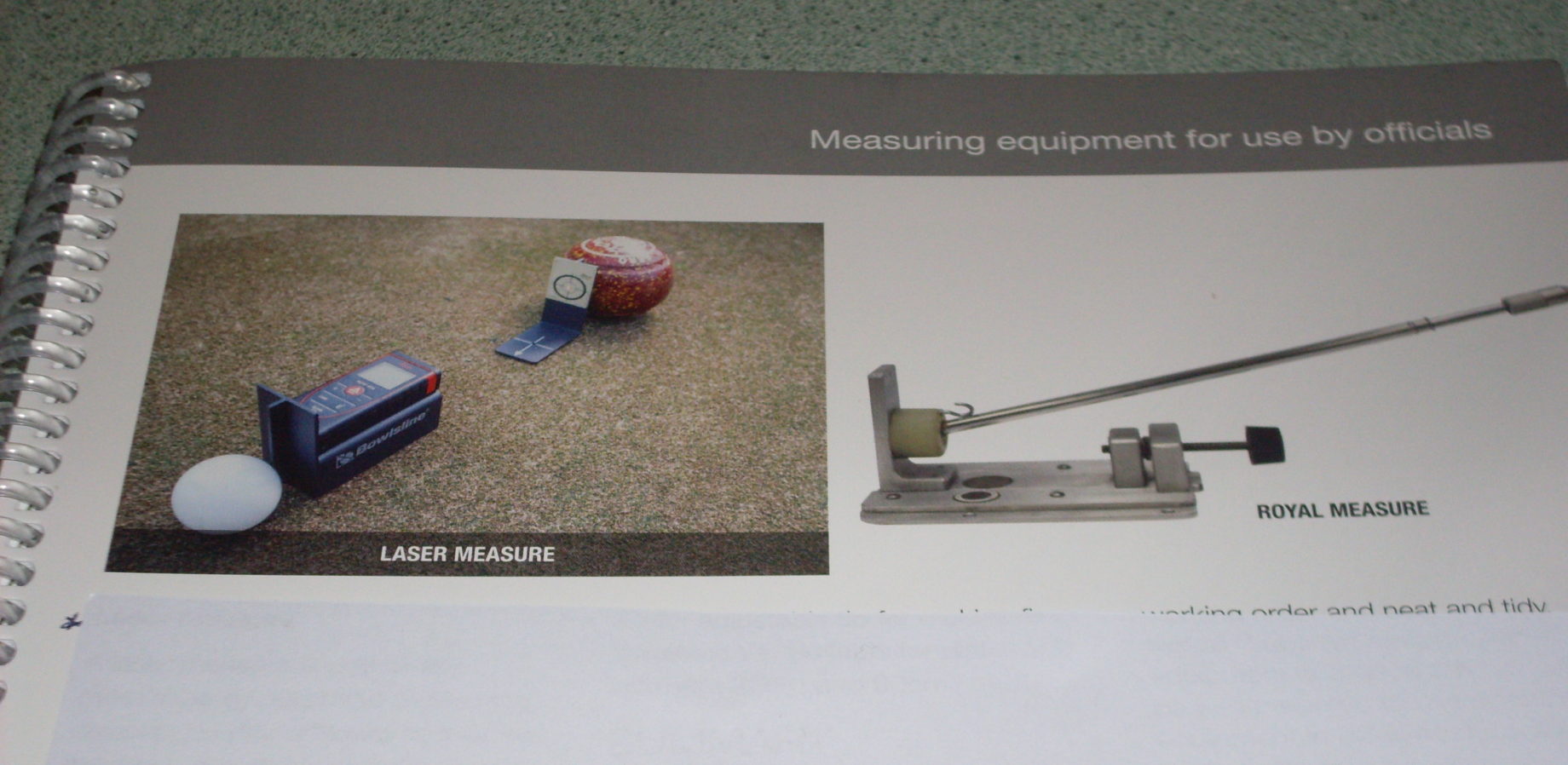The difference between a TEAM GAME and a SIDE GAME
I hope that everyone has survived the very hot weather we have been experiencing over the past months and the extreme weather information in the February and March umpire column has been of assistance to you.
It is very important to still keep drinking water and using our clothes to cool down when playing.
Seminar
Bowls Queensland Umpire Coordinator, John Kirkpatrick and myself conducted another seminar at Windsor Bowls Club in the Brisbane District. The input from attending members was excellent with many questions asked and good discussions pertaining to the answers. We were also able to see a demonstration of the Laser Measure and Royal Measure when we went out on the green.
Photos of both are included in this article and can also be viewed on Page 65 of the Officiating Manual.
Differences between team games and side games
We received many questions at our previous umpire meeting regarding the differences between a TEAM GAME and a SIDE GAME.
Firstly, here are some definitions that will help to clarify the terms we use in bowls:
B. Players: (Page 9)
B.1 Side: Any agreed number of teams or Singles players (or a combination of teams and Singles players) whose combined scores decide the result of a competition.
B.3 Team play:
B.3.1 Team: a Pair, a Triples or a Four.
B.3.2 Pair: a team of two players whose positions, in order of play, are “lead” and “skip”.
B.3.3 Triple: a team of three players whose positions, in order of play, are “lead”, “second”, and “skip”.
B3.4 Four: a team of four players whose positions, in order of play, are “lead”, “second”, “third” and “skip”.
If there is confusion regarding absentee players in a team or side, then these rules apply:
39.1 In a team game: (Page 57)
39.1.1 In a team game, the Controlling Body will decide on the eligibility of each member of the team. If a team introduces an ineligible player, the defaulting team will forfeit the game to their opponents.
39.1.2 If, 30 minutes after the scheduled start time for a game, or sooner if the Controlling Body decides, one or more players are absent from a team, the defaulting team will forfeit the game to their opponents.
39.2 In a side game: (Pages 57 and 58)
39.2.1 In a side game, the Controlling Body will decide on the eligibility of each member of the side. If a side introduces an ineligible player, the defaulting side will forfeit the game to their opponents.
39.2.2 If, 30 minutes after the scheduled start time for a game, or sooner if the Controlling Body decides, one player is absent from one or more teams in a side, the game must continue but:
39.2.3 For domestic play, Member National Authorities can approve regulations which are different from those mentioned in Law 39.2.2. and the following applies:
DR.2.6 Absentee players in a side game (Page 117 and 118)
2.6.1 If, 30 minutes after the scheduled start time for
a game, or sooner if the Controlling Body decides, one player is absent from one or more teams in a side and no eligible substitute is available or allowed, the game must continue, however:
2.6.1.1 A team with an absent player plays as though the second is the missing player.
2.6.1.2 The order of play shall be maintained by the second of the complete team playing consecutive bowls.
2.6.1.3 Each player must use the number of bowls specified in the Conditions of Play for that event.
2.6.2 If a player has commenced the game, however, is unable to continue the game and no eligible substitute or replacement player is available or allowed, play will continue as if one player is absent as per 2.6.1.
2.6.3 If an absent player arrives late, they must take their original place in the team when they arrive and enter the game at the completion of the end in progress.
2.6.4 If an eligible substitute or replacement player becomes available and is permitted by the Controlling Body, they may be introduced to the game at the completion of the end in progress.




